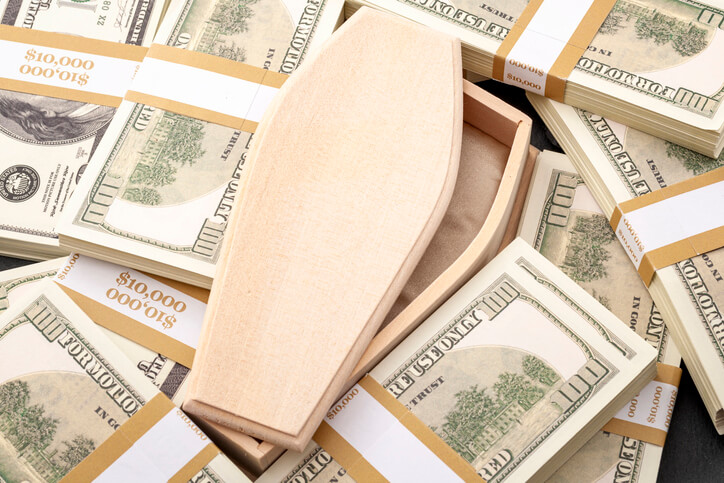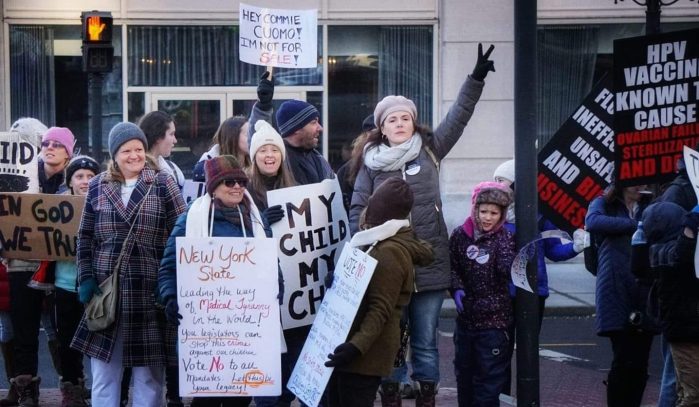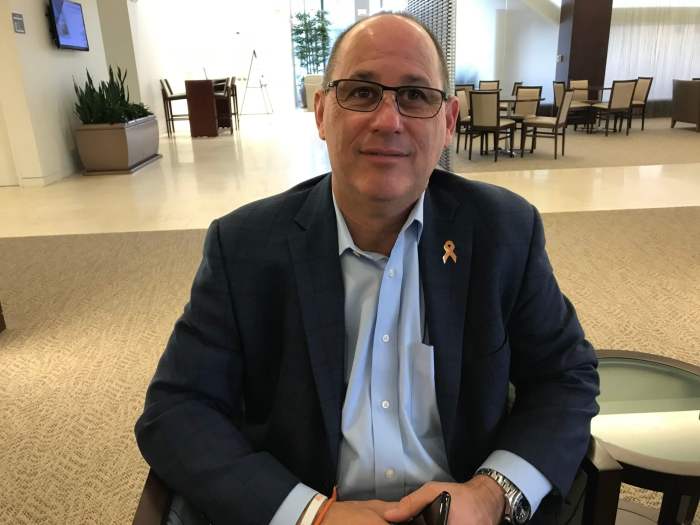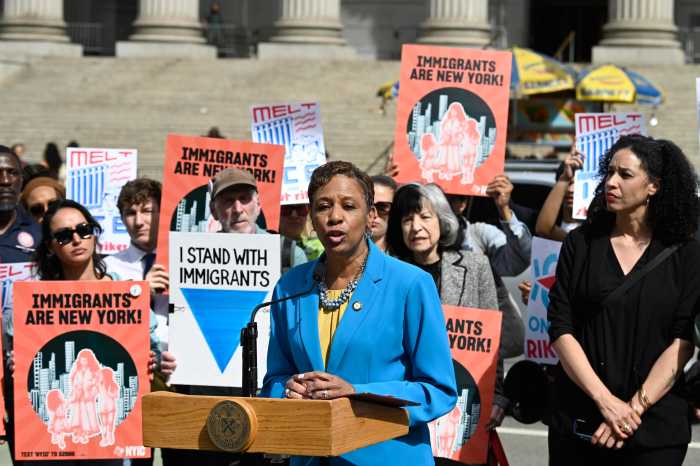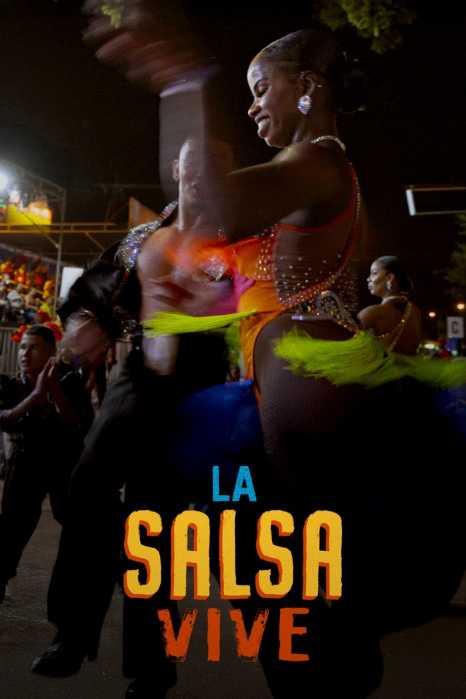This story was originally published by ProPublica. ProPublica is a Pulitzer Prize-winning investigative newsroom. Sign up for The Big Story newsletter to receive stories like this one in your inbox.
The stretch where Pinelawn Road turns into Wellwood Avenue on Long Island is known to locals as Cemetery Row. For 3 1/2 miles, the four-lane road is lined with sweeping, manicured lawns with separate entrances to eight cemeteries set back from the street. Comprising 2,300 acres, almost three times as much land as New York City’s Central Park, it’s the largest contiguous area devoted to burials in the United States.
The business district in Cemetery Row has a power plant, a commuter rail station and a suburban-style commercial strip surrounded by burial grounds. Large signs advertise marble slabs, and you can see smoke wafting up from a crematory. Commercial and religious establishments with names such as St. Charles Monuments, Eternal Memorials and Star of David Memorial Chapel alternate with Kerensky Florist, Michelle’s Florist and Chicky’s Florist, not to mention two gas stations and the Barnwell House of Tires.
The oldest of the cemeteries here, in Farmingdale about 20 miles east of New York City’s eastern border, is Pinelawn Memorial Park. At 839 acres, it’s the second largest nonmilitary cemetery in the country. During the dark early days of the pandemic, when local cemeteries struggled to keep up with the region’s wave of COVID-19 casualties, Pinelawn emerged as a standout; it was able to keep its operations going to meet the needs of grieving families. Pinelawn buried 5,381 people in 2020, up 30% from the year before, according to its filings.
In New York, unlike most other states, cemeteries are not-for-profit organizations. For 175 years, the state has prohibited for-profit cemeteries, largely to ensure that as much money as possible goes to the upkeep of graves and to prevent profiteering from death. Like other cemeteries in New York, Pinelawn is owned by the thousands of people who have bought burial plots there, overseen by a board meant to represent the plot holders’ interests. As a nonprofit, Pinelawn pays no taxes on its land or on the millions of dollars that surged into its coffers during the pandemic.
But Pinelawn doesn’t resemble other New York cemeteries in a key respect: The Lockes, the family that has run Pinelawn since it opened in 1902 and that has passed down the leadership among four generations, have consistently cashed in on its nonprofit operations. During its heroic pandemic efforts in 2020, the cemetery’s revenues rose by a third, and as demand soared, Pinelawn raised the prices of its burial plots as much as 47%, with the price of a plot in one coveted location rising from $7,495 in 2020 to $10,995 a year later. And that doesn’t count the cost of the bronze grave markers, mandatory at Pinelawn (which bars traditional gravestones in favor of markers that are flush to the ground). In all, the grave markers and a long list of additional fees can add another $7,000 to $10,000 on top of the cost of the plot.
Pinelawn president Justin Locke was paid $500,000 in 2020. His wife, Alexandra, who was promoted from office manager to executive vice-president of the organization in 2016, was paid $300,000. Locke’s parents, aunts and uncles split another $2.2 million in dividend-like payments from the sale of cemetery plots.
The combined $3 million made by the Locke family from Pinelawn in 2020 doesn’t capture its total take, nor does it capture the family’s history of using Pinelawn to make money. Justin Locke’s father, Stephen, who ran Pinelawn until 2013, used about a quarter of the cemetery’s land to open a for-profit golf course that he co-owns to this day.
Meanwhile, Pinelawn, which has touted its beauty and tranquility for more than a century — it spends $1 million a year on advertising, according to publicly filed financial reports, more than any cemetery in the state — has embarked on a plan to lease another 100 of its acres to a developer who plans to build warehouses and office buildings.
Pinelawn and the Lockes declined multiple requests to be interviewed for this article. Presented with extensive questions in writing, Katherine Heaviside, a press representative for the family and the cemetery, responded to only one of the scores of points raised. And as this article was nearing publication, the cemetery mailed ProPublica a check for $1,000, which Pinelawn said was intended as a donation. ProPublica returned the check, citing the impending article. Heaviside said the donation was made “in response to a solicitation from Jill Shepherd at ProPublica,” adding, “ProPublica’s ethics are very questionable here.” (Shepherd, ProPublica’s director of online fundraising and outreach, sends out bulk email solicitations that are distributed to hundreds of thousands of people who have agreed to receive emails after signing up for ProPublica’s newsletters or donating. She has never been in individual contact with Pinelawn.)
The Lockes’ ways of cashing in on a nonprofit have caused periodic consternation in New York government circles for the better part of a century. Those practices helped lead to the creation of a state regulatory agency to oversee cemeteries and a legal ban on the sorts of dividends that the Lockes receive. But for nearly 75 years now, that ban has exempted Pinelawn. The cemetery business may have changed a lot during that time, but, it appears, the Locke family’s practices have not.
In the early months of the pandemic in the New York City area, the systems that processed deaths were as overwhelmed as those that worked to save lives. Bodies piled up at hospital morgues. Funeral directors couldn’t quickly answer the calls of grieving families, much less retrieve bodies. Crematories burned around the clock.
Cemeteries, too, struggled to manage during the start of the pandemic. Long Island facilities were booked solid, and wait times for burials increased to weeks. Cemeteries had to begin imposing restrictions. Calverton National Cemetery, the largest military burial site in the country, located about 40 miles from Pinelawn, limited casket burials to 15 per day and stopped accepting cremated remains for burial. Military honors were also suspended. Other operations, such as St. Charles Cemetery, located across the street from Pinelawn, reduced hours and staff. “All funerals Monday through Saturday must arrive by 12 p.m. — There will be no overtime or exceptions,” regulations read.
Many cemeteries, each typically serving hundreds of different funeral homes, limited themselves to 10 burials per day, at a moment when a single funeral home might receive 10 or more bodies a day, according to local funeral directors. “The demand was way higher than the burial limits cemeteries were imposing,” said Michael Hoddinott, a funeral director at Brueggemann Funeral Home in Long Island’s East Northport.
But Pinelawn was able to smoothly accommodate the surging death toll and continued to operate without delays, according to funeral directors and a statement made by the head of the state Division of Cemeteries at a meeting of state regulators. “If I had to choose a cemetery to deal with during the pandemic,” said Hoddinott, who handled 37 burials at Pinelawn in 2020, “it would be Pinelawn.” Nancy White, a funeral director at nearby Arthur F. White Funeral Home, concurred. “Pinelawn was terrific compared to the other cemeteries next to it,” she said.
Burials at Pinelawn continued, albeit with COVID-19 protocols such as limits on the number of attendees, social distancing rules and required face coverings. Rather than restricting the number of funeral directors within the administration office, Pinelawn set up a courtyard table to allow funeral directors to check in safely during the worst periods. Paperwork was handled swiftly, and funerals adhered to a strict schedule to fit as many burials into the day as possible.
Heavy demand, combined with Pinelawn’s ability to maintain seamless operations at a time of maximum duress, allowed it to implement price hikes in 2021. Pinelawn broadly raised the prices for its land graves (which can exceed $30,000), according to price lists filed in November 2021 with the Division of Cemeteries and obtained in a records request.
Pinelawn charges an additional $1,878 to bury a body (plus another $600 if you want to hold the burial on a Saturday). You’ll need to pay $728 to $900 more if you want the grave to have a concrete liner. Bronze plaques, as noted, are mandatory and run $2,345 to $4,698; if you want text inscribed on the plaque or a notation that your loved one was a military veteran, that could cost another $1,000 or so. If you request four folding chairs at the burial, you will be billed $68, and if you want a canopy, that’s another $170. And none of this, it should be noted, includes charges from the funeral home, such as the cost of a casket or embalming.
All those new graves and higher prices at Pinelawn translated into cash for the Locke family, the descendents of the cemetery’s founder. The explanation lies in an obscure but lucrative financial instrument called a “land share,” which in Pinelawn’s case dates back to 1904 and pays dividends twice a year. Those payouts more than doubled during the early months of the pandemic, from $13.65 per share in August 2019 to $28 in August 2020, before subsiding to $20.70 in August 2021.
The Locke family owns 51,964 of the 127,850 land shares that were issued by Pinelawn during the presidential administration of Theodore Roosevelt, and which still circulate today. The shares are unusual in another regard: Some of the rest are traded on an over-the-counter financial market — their price has more than doubled over the past five years — and a small coterie of investors have bought shares, coveting their reliable revenue stream. No other cemetery land shares are listed on the OTC Markets Group.
Calling them “land shares” is a bit of a misnomer, since they don’t actually entail owning land. Instead, they’re an investment, originally used to fund the creation of the cemetery, that entitles the holder to dividends derived from the sales of cemetery plots. Half of the proceeds from each sale of a plot go to pay the dividends, with the other half used to take care of the property.
The shares remain valid until the last plot is sold and the empty land at Pinelawn has been used up. That day is far off. Of Pinelawn’s 839 acres, more than 600 remain unsold and undeveloped today. In 2018, Pinelawn president Justin Locke said that at the current pace the cemetery wouldn’t run out of land for at least 206 years.
Using land shares to help raise money for cemeteries was not unusual in the late 19th century, according to the 1991 book “The Last Great Necessity: Cemeteries in American History,” by David Charles Sloane. The book describes such shares as a method of “hiding the profitable nature of the investment” at a time when Americans were uncomfortable with the notion of making money on death. (Today, most states allow for-profit cemeteries, and a handful of national corporations have bought up more and more cemeteries.)
New York state banned for-profit cemeteries in 1847 — not only to prevent profiteering but to ensure solid financial management. Back then it was common for entrepreneurs to open cemeteries without adequate financial backing. The operations often went bankrupt, leaving untended graves and, sometimes, unburied or partially buried corpses in various states of decomposition.
Pinelawn’s land shares originally sold for as little as $1 a share, but they have delivered huge profits for those lucky enough to have them: more than $100 million since the first distribution in 1904, according to calculations by ProPublica.
The shares come with another boon: By all appearances, holders of land shares don’t have to pay taxes on their dividends. Holders of the shares told ProPublica that Pinelawn does not issue 1099 forms for the shares, which, among other things, would notify the IRS of any income. In addition, a 2008 letter written by Pinelawn’s tax lawyers described the shares as “exempt.” An IRS spokesperson declined to comment, and multiple tax experts contacted by ProPublica said they’d never heard of land shares and couldn’t say whether their dividends should be taxed. Representatives for the Locke family did not respond to ProPublica’s written question asking whether they pay taxes on their land share dividends.
The area around Pinelawn looked very different in the late 19th century, when William H. Locke Jr. first began hatching plans for a cemetery. Lush forests of oak and pine thrived. Farms and country estates lined the rural roads.
Locke saw an opportunity: The population of New York City was exploding, and Manhattan in particular was running out of space to bury the dead. In the 1890s, Locke started accumulating large tracts of land. By 1899, he owned 2,300 acres.
At the time, New York state law provided that a private cemetery association could not own more than 200 acres. William Locke got around the limit by splitting his operation into eight separate associations. For reasons that have been lost to time, Locke appears to have persuaded a state court a few years later to order the reassembly of the eight groups into one operation owned by Locke.
Opening a huge cemetery cost money, and Pinelawn embarked on an “innovative sales program,” according to “The Last Great Necessity.” Pinelawn took out newspaper ads and deployed salespeople to sell plots in advance. They were “authorized to offer purchasers a payment plan of 25 cents down and 23 cents until the lot was purchased.”
Pinelawn was also whipping up a frenzy, by the standards of the era, for its land shares. Thousands of people would eventually buy the certificates. A prospectus claimed they would be as safe as government bonds and “produce an income more than ten times greater.” The shares, the prospectus noted, would be “exempt from all taxation.”
The document promised Pinelawn would be “the most elegant cemetery in the world.” It boasted that the Long Island Rail Road “runs through the center of its lands, and the Company is now erecting a private station and mortuary chapel of its own,” and that “a large receiving vault of the most sanitary nature, and under the most improved designs and artistic finish has just been completed.”
Pinelawn employed the sort of sales hype — “the largest burial place in the world” — that you might associate more with, say, launching the Queen Mary than consecrating a place of mourning and remembrance. The cemetery’s opening in the fall of 1904 was a festive affair. The 47th Regiment Band played, and special trains unloaded dignitaries from New York and Brooklyn at the newly opened station. A bishop and a county judge gave congratulatory addresses.
Despite the gala and Pinelawn’s sales prowess, the cemetery fell into financial trouble almost instantly — and questions about its business practices surfaced. Tension grew among Pinelawn’s directors, who included a raft of bank presidents and R.F. Pettigrew, listed on the cemetery’s prospectus as a “former U.S. Senator and Capitalist.” In 1905, Pettigrew resigned from the board, claiming that Pinelawn was being grossly mismanaged and that its officials had destroyed documents. Pettigrew also claimed that founder William Locke and another executive had sold land shares for their own benefit, rather than to generate revenue for the cemetery.
Locke disputed the claims and fired back in kind. Pettigrew, he said, “claims deception was practiced upon him, but it is also apparent that he made no noise about it until he had disposed of most of his shares and pocketed the money.”
Pinelawn continued to struggle in its early years. It failed to pay dividends on its land shares and in 1915 was placed in receivership. (William Locke’s brother-in-law managed to get himself appointed receiver until a judge discovered his ties to the Lockes and booted him from the role.) At that point, Pinelawn’s only assets were land, a few horses and hearses and $68 in the bank. It had debts of $280,000. Pinelawn claimed it couldn’t pay a judgment in a case brought by land share holders who said they hadn’t gotten their dividends.
As a result, a judge ordered Pinelawn to sell portions of its land to pay the judgment. Over the next 15 years, Pinelawn sold more than 1,400 acres of its original property to other cemeteries. That helped Pinelawn stabilize its finances while reducing its size to its current 839 acres.
It was a precarious period for Pinelawn. William Locke died suddenly at his desk in the cemetery office in 1922 and was briefly succeeded by his wife, Lillian. She then gave way to her sister, Eleanor Hughes, who remained the ultimate power at Pinelawn until Alfred Locke ascended to the presidency of Pinelawn in 1949.
Pinelawn and other New York cemeteries continued to draw suspicion about their business practices. The state attorney general launched an investigation, and, in 1949, released a report that excoriated the industry for “profiteering from sorrow.” Attorney General Nathaniel Goldstein concluded that nonprofit cemetery corporations “have been cynically developed into devices for profiteering on the widest possible scale.” He found evidence that operators were draining millions of dollars from cemetery corporations; that cemetery managers stacked their boards with family and cronies to maintain control; that they paid excessive salaries to executives; and that they secretly sold plots at discounts to friends and family, who would then resell the plots at a big markup.
Pinelawn was cited as an example of the latter abuses. Goldstein pointed out that, under the heading “self-arranged bargains,” Alfred Locke allowed his aunt to buy 40,000 burial plots for 27.5 cents each, which she could then resell for $50 to $100 apiece.
After Goldstein’s report, the state — over vehement protests by the Lockes and others — established a new regulatory agency, the New York State Cemetery Board. All nonprofit cemetery corporations would henceforth be required to file their rates and financial reports with the state and to abide by the board’s rules. The Cemetery Board today regulates the 1,700 cemeteries in New York State, not including religious or municipal facilities and burial grounds operated for family or individual use, which are outside the board’s oversight.
The state legislature then banned the issuance of new land shares but made an exception for existing shares. Today, according to the state cemetery division, only two other cemeteries still have outstanding land shares. But those cemeteries — Cedar Grove and Mount Lebanon, both in Queens — are close to capacity and thus pay only modest dividends today.
Alfred Locke managed to revive Pinelawn’s business in the decades that followed the 1949 attorney general’s report, using what “The Last Great Necessity” described as “inventive advertising, direct mail and door-to-door approaches.” He turned the operation into a financial success.
In 1971, a profile of the cemetery in The New York Times was headlined “Pinelawn Is a Prosperous City of the Dead.” As cemeteries in Queens, Brooklyn and the Bronx approached the “point of saturation,” reporter John Darnton wrote, “the city is reaching farther for room to bury its dead.” He described a steady stream of funeral corteges on the Long Island Expressway. The article quoted Alfred Locke defending Pinelawn’s aesthetic approach. “It’s really a conservationist thing,” he said. “People say, ‘what a waste of land.’ But what would you prefer to see, a factory? A 20 story office building?” Locke went on to say, “I think we’ve got to stop and say we’ve had enough: We can’t look at a place with a lot of industry and say, Isn’t that wonderful! Because industry breeds congestion and pollution.”
By the early 2000s, Alfred had long since been succeeded by his son Stephen, and once again Pinelawn came under scrutiny for its business practices. The questions this time stemmed from a golf course that had opened adjacent to the cemetery a few years earlier.
Like Alfred, Stephen Locke was entrepreneurial. He proposed leasing 225 acres of unused Pinelawn land to create the golf course. “I looked at this as an opportunity to do something that wasn’t merely a continuation of something my father had started,” Locke told The New York Times in 1995 about his then-planned golf course. He called it a “win-win situation.”
Locke would be a co-owner of the golf course, entitled to his share of any profits from that operation. That meant that Stephen Locke (chairman of nonprofit Pinelawn) would be transacting with Stephen Locke (president of the for-profit golf course).
Using cemetery land for another purpose required that Locke obtain approval from state regulators. “At the beginning, the Cemetery Board was sort of dead set against it,” according to Gus Ballard, an investigator with the state Department of Cemeteries from 1993 to 2019. But Locke assured the regulators that Pinelawn would benefit from the golf course — the lease would generate revenues for the cemetery — and that none of his actions would jeopardize the cemetery’s finances or tax-exempt status. He also enlisted support from prominent New York state politicians, including Sen. Daniel Patrick Moynihan and Long Island’s U.S. Rep. Thomas Downey. (Moynihan died in 2003; Downey did not reply to a request for comment.) Locke “turned everything around,” Ballard said. “So that eventually got approved.”
But Locke had withheld key information, according to Ballard, who said he discovered this a few years later, in 2002, when he was performing a routine audit of Pinelawn. Ballard began to uncover what he saw as irregularities. The most consequential, in his view, was the Lockes’ ownership of plots (which equate to votes for Pinelawn’s governing board) that it had not revealed to the Cemetery Board, giving the family what Ballard called “virtual absolute power over Pinelawn’s affairs.”
Ballard also discovered undisclosed details of the golf course arrangement. Locke had used some of the graves he owned as collateral for the loans that financed the golf course, an apparent violation of a state rule that prohibits putting cemetery funds at risk for an outside venture. Since Locke didn’t have the right to sell large numbers of graves on the open market, he created an option agreement that would allow him to sell his lots back to the cemetery if needed. Pinelawn’s board of directors, 11 of whose members were “hand-picked” by Locke, according to the state — three of them, plus Stephen Locke himself, owned a combined 56% of the golf course — approved the option agreement.
Ballard drafted a memo for the Division of Cemeteries that echoed the Goldstein report a half-century before it. “Pinelawn Cemetery has been operated, all along,” he wrote, “primarily for the private benefit of the management and Land Shareholders, with the interests of ordinary plot owners, (and the cemetery’s future), receiving subservient consideration, at best.”
Stephen Locke “was not happy” when authorities began investigating his moves, said Richard Fishman, then head of the state cemetery division. Pinelawn was owned by its plot holders, but Fishman said Locke’s attitude was “he owns the cemetery and it’s his business and he can do whatever the hell he wants, which is a great point of view if he were in any other state than New York.” Fishman’s division forwarded its findings to the state attorney general.
In 2004, then-New York Attorney General Eliot Spitzer filed suit against Locke, Pinelawn and several of its officers and directors, alleging that the Lockes had for decades violated the ban on private ownership of public cemeteries. The suit repeated the charges made by Ballard. And it included an assortment of other allegations, including that the Lockes had diverted proceeds from the sales of mausoleums to benefit the holders of land shares, whose dividends are supposed to flow from sales of plots only.
Spitzer also charged Pinelawn with failing to disclose to taxing authorities millions of dollars paid by the cemetery to land share holders and omitting required disclosures from annual reports filed with the state Cemetery Board. Pinelawn acknowledged not sending 1099s to shareholders, but argued in legal filings that the payments are not dividends but instead repayments of capital, which it contended meant that no taxes were owed. In its court papers at the time, Pinelawn denied “any and all liability with respect to the causes of action alleged in the Action.”
The suit was settled in 2006 with no payment by Pinelawn or the Lockes and only one significant concession: Pinelawn agreed that Stephen Locke would sell 51% of the graves he owned. The Lockes would no longer own a majority of graves and, in principle, would no longer be able to dictate the composition of Pinelawn’s board. Ballard called the settlement a “halfhearted attempt to sort of make it so they weren’t solely in charge of the whole operation. I’m not sure we did a very good job with that.”
The board members were slowly replaced, but the new ones seemed to resemble the ones they succeeded: lawyers, politicians and lobbyists, often with ties to the Lockes. Three new directors joined the board in 2007, two of them state or regional power brokers: Arthur Kremer, an attorney who served 13 terms in the New York State Assembly and headed its Ways & Means Committee; Mark Cuthbertson, an attorney and longtime Huntington town councilmember; and Locke’s son, Justin. (Kremer and Cuthbertson did not respond to a request for comment.) The Lockes and Pinelawn “have a lot of political clout,” said Fishman, the former head of the Division of Cemeteries.
The composition of Pinelawn’s board changed — but its amenability to the Lockes didn’t. In 2007, just a year after the settlement with the state, Pinelawn’s board voted to approve another option agreement with Stephen Locke, almost identical to the one that Ballard viewed as illegal. The agreement allows Locke’s ownership of 2,500 graves to be used as collateral for $2.5 million in loans he took out for the golf course.
Today, the golf course, called Colonial Springs, continues to operate. According to Pinelawn’s 990 form, Colonial Springs paid some $400,000 in property taxes last year. It underwent a $4.5 million renovation in 2007 by renowned architect Robert Trent Jones Jr., winning accolades in Golf Digest. In addition to Stephen Locke, three of Pinelawn’s current directors (none of whom responded to requests for comment) are also board members and shareholders of the golf operation.
When Justin Locke first appeared before a meeting of the state Cemetery Board in March of 2018, it offered a rare moment to see Pinelawn’s president, who had acceded to the position five years earlier, in a public forum. In a trim dark suit, his pate glinting from the fluorescent lights in the cramped, low-ceilinged room, Locke cut a confident figure, a video of the meeting shows. He spoke in the urgent baritone of a 1950s-documentary narrator.
The grandson of Alfred Locke, the man who had talked about the importance of conservation and his horror of factories and office buildings, Justin Locke was appearing before the Cemetery Board to sound them out on a new idea: leasing 100 acres of Pinelawn’s property to develop into warehouses and office buildings.
Justin Locke made his case to the Cemetery Board, starting with the surprising claim that the area of the cemetery he wanted to develop was blighted. He described the 100-acre parcel as filled with “crime, trespassing, quality-of-life issues that are affecting the neighbors, complaints. It’s hurting our reputation.” (The “crime” he was describing seemed to consist largely of trespassers riding ATVs on the property.)
Noting Pinelawn’s extensive unused land, Locke touted the potential revenues the cemetery could earn by leasing the parcel. He called it a “cake-and-eat-it scenario where we can leave the property over there, maintain control over it, but generate a substantial income off of it in the meantime.”
He also made a remark that seemed to reflect his awareness of the legacy he inherited as the fourth generation of Lockes to head the cemetery. “I see this as a tremendously beneficial, impactful project for Pinelawn,” he said. “I don’t know if there’s anything I’ll do in my time there that will eclipse the benefit that could be had from this.”
For their part, a few board members showed their own memory of history, alluding to the allegations of self-dealing that were made about Locke’s father and his golf course. One board member said, “Obviously the law has changed since the golf course lease was signed, and what would be a nonstarter would be if your lessee ends up having any relationship to anyone on the cemetery side,” he said. “That ain’t happening.” (“Oh yeah,” a second board member chimed in.) Locke brushed the comment aside with a quip about hoping to have FedEx as a tenant.
Four years and one pandemic later, Pinelawn’s plans have slowly advanced. The cemetery’s representatives shared preliminary documents with the planning department for the town of Babylon, and met with department representatives in January 2022. The plans called for transforming those 100 acres into “the region’s foremost Class-A business Park.” The development, with a budget projected to exceed $175 million, would include nine warehouses and office buildings, totaling 1.6 million square feet, and would be known as the Suffolk Technology Center. Todd McLay, chief financial officer of the developer, the Bristol Group, would not comment on the details of the lease, citing its proprietary status. But he confirmed that the project is actively in the works.
Before the town can consider a formal application, the state Cemetery Board must approve the use of any cemetery lands. The Division of Cemeteries told ProPublica it has received an application from Pinelawn and is reviewing it. It declined to estimate a timeline for a hearing and decision.
Pinelawn has always been strict about the appearance of anything on its grounds. Not only are tombstones barred, but so is anything that might obstruct the open vistas. Only fresh-cut flowers are permitted — nothing artificial — and they are removed at specified times to avoid the potential eyesore of wilted petals. But soon, if the plans proceed, a construction will rise — a rendering shared by Pinelawn suggests it will be around 30 feet tall — dominating the view from one part of the cemetery. The Lockes, it seems, will continue running Pinelawn and profiting from it. Meanwhile, Justin Locke’s son is 9, so there’s a fifth generation in his patrilineal line who could ascend to the helm.




